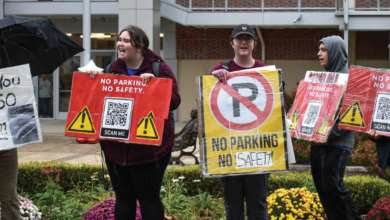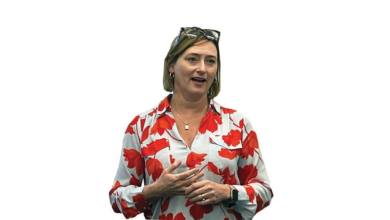
Students have a conversation with Rider president about issues of diversity
By Tatyanna Carman
Students discussed issues regarding lack of representation and support, along with their thoughts on the racist Zoom bombing incident that occurred on Feb. 11, with administrators and President Gregory Dell’Omo at the “Reactions to the campus response to racism: A conversation with the President” event, which occurred on Feb. 24 at 7 p.m.
The university sent out an email inviting all students who identify as Black or African-American to have an open conversation about the racist Zoom bombing incident with Dell’Omo and other members of his leadership team on Feb. 19.
“We also want to provide students with an opportunity to discuss the event with me and other senior leadership, which is one of the reasons why we’re here tonight as one of the first steps in having that conversation, and really want to learn more about how this was all perceived and reacted to and more importantly, how do we learn from this situation,” Dell’Omo said.
Thirty-six people attended the event. One of the recurring themes discussed at the event was how the university plans to support its Black students.
“One is listening and getting feedback,” Dell’Omo said. “That’s more the full process and continuing these conversations, but also through more formal ways in terms of our programs, our events, our support systems that we have in place. You know, it’s just making sure we create a culture in the institution that allows for people to feel comfortable, safe and welcomed.”
Senior psychology major and Student Government Association (SGA) Equity and Inclusion Chair Leauna Chisolm said that one of the ways the university could show support for its Black students is by broadcasting that services, such as the counseling center, have staff that represents various backgrounds. She said that speaking to a Black counselor at the counseling services helped her after the Feb. 11, Zoom bombing incident.
“When I went to counseling services myself, there was a lot that I didn’t have to explain because she understood because when I went and I signed up, I specifically asked for a Black counselor,” Chisolm said. “There was a lot that I just was able to, you know, just go through and we got past a lot and got through a lot because she already understood.”
Graduate student Gabrielle Magwood added to Chisolm’s sentiment about the need for support.
“I just feel that there is a lot of talk, but there’s not enough action being done,” she said. “Like, I feel like students don’t feel that they can or don’t feel supported because there’s always comments students don’t feel that they can or don’t feel supported because there’s always comments about, you know, like, we’re going to do this, we’re going to do that. But where are concrete action plans? Where is a concrete timetable of when are these things being implemented?”
She also said that a concern for her is that the administrators that make these large-scale decisions do not look like her.
“There are a lot of people who are making these decisions, who don’t look like the people that these decisions are supposed to impact,” Magwood said. “So as much as you want to do the best for those students, until you have people that look like those students that have those lived experiences, I don’t think that Rider’s going to be able to effectively create that inclusive community until the people making the decision sitting in that room look like the racial makeup of our university.”
The student attendees also asked about the diversity training process for professors.
According to Dell’Omo, during the search process for faculty members, candidates are asked to “speak on their issues of diversity and equity inclusion and how they approach their discipline, their teaching and their research.”
Provost and Vice President for Academic Affairs Donna Jean Fredeen said, “In the search process itself, one of the things we ask any candidate to do is to submit a statement that describes not only their commitment to diversity and inclusion but also evidence of that commitment,” she said. “And we asked them to talk about their experiences in teaching diverse populations of students. So we are asking, and one of the primary reasons we asked that is to also send a message to the candidates, that we take diversity and inclusion very seriously on campus.”
Dell’Omo said that there is not a required training process for faculty, but there are voluntary programs within the Teaching and Learning Center available.
Students also addressed that there is an issue in communicating the supportive resources for Black students. Dell’Omo said that this issue is a “common theme” in the discussions that he has with students in regards to communication.
Magwood said that she decided to attend the event because she felt it was “pertinent to hear what other students were thinking” and to voice her concerns after hearing about the Feb. 11, Zoom bombing incident. She said that this event met her expectations.
“The fact that this conversation was even held is great to me because sometimes I feel like there aren’t enough platforms for Black students to be open and honest,” she said. “I do believe that people voiced important statements and opinions that needed to be said and to some of the right people.”
Magwood said that she wished more people showed up and wished the event would be open to non-Black students because “Black students can say all of the things that they want about the situation, but it is non-black students who typically perpetrate these attacks and prejudicial comments/actions.”
Vice President for Student Affairs Leanna Fenneberg shared the insight she gained from the conversation.
“I hear from some of our Black and African American students that they believe we are committed to racial equity and inclusion as a campus, but they clearly want to see the continuous progress and actions towards this positive change,” Fenneberg said. “I hope students believe in the campus commitment to these issues that we have exercised in many ways, understanding that this kind of long-lasting systemic change does take time, but that people from all corners of the campus are working continuously in this direction. I think we can improve in our continuous, transparent communication to share with students the specific actions that are being taken and how we are measuring progress on our goals.”
Chisolm shared that she thought the event was OK and it met her expectations.
“Personally, to say it was a successful session, I wouldn’t say successful, but I would say that the different administrators were able to hear different voices than the usual student leaders, and also they seem to actually be taking everything in,” she said. “When I check back in to see if any steps have been taken since the feedback given to the President, that will determine if the event was successful or not.”
She also said that she thought the students learned about more resources that they “did not know about on campus, that would be more helpful to them being comfortable.”
“I personally am glad that they got to hear from other students than the usual black student leaders because those students were not only able to give a new voice but also a new perspective,” Chisolm said. “Especially, from the perspective of black commuter students because I do think they do not get the recognition they should. However, all in all I do hope to see some next steps as soon as possible, but I know these things do take time.”


